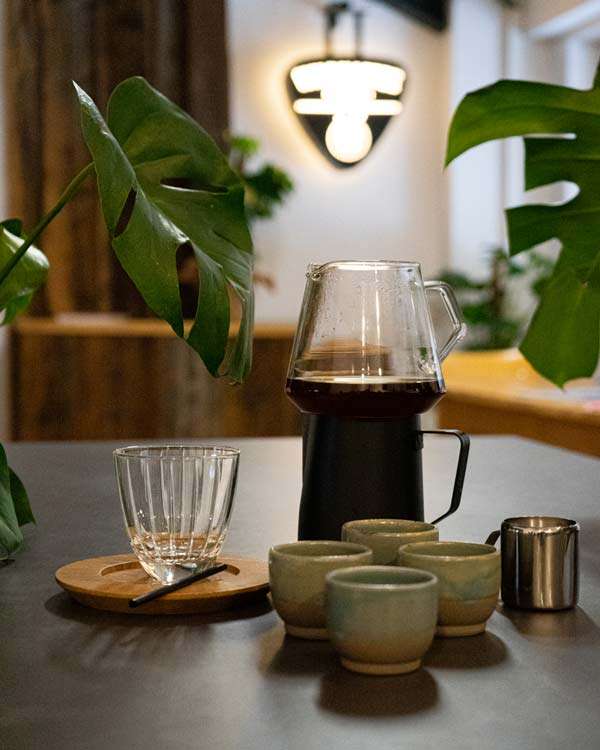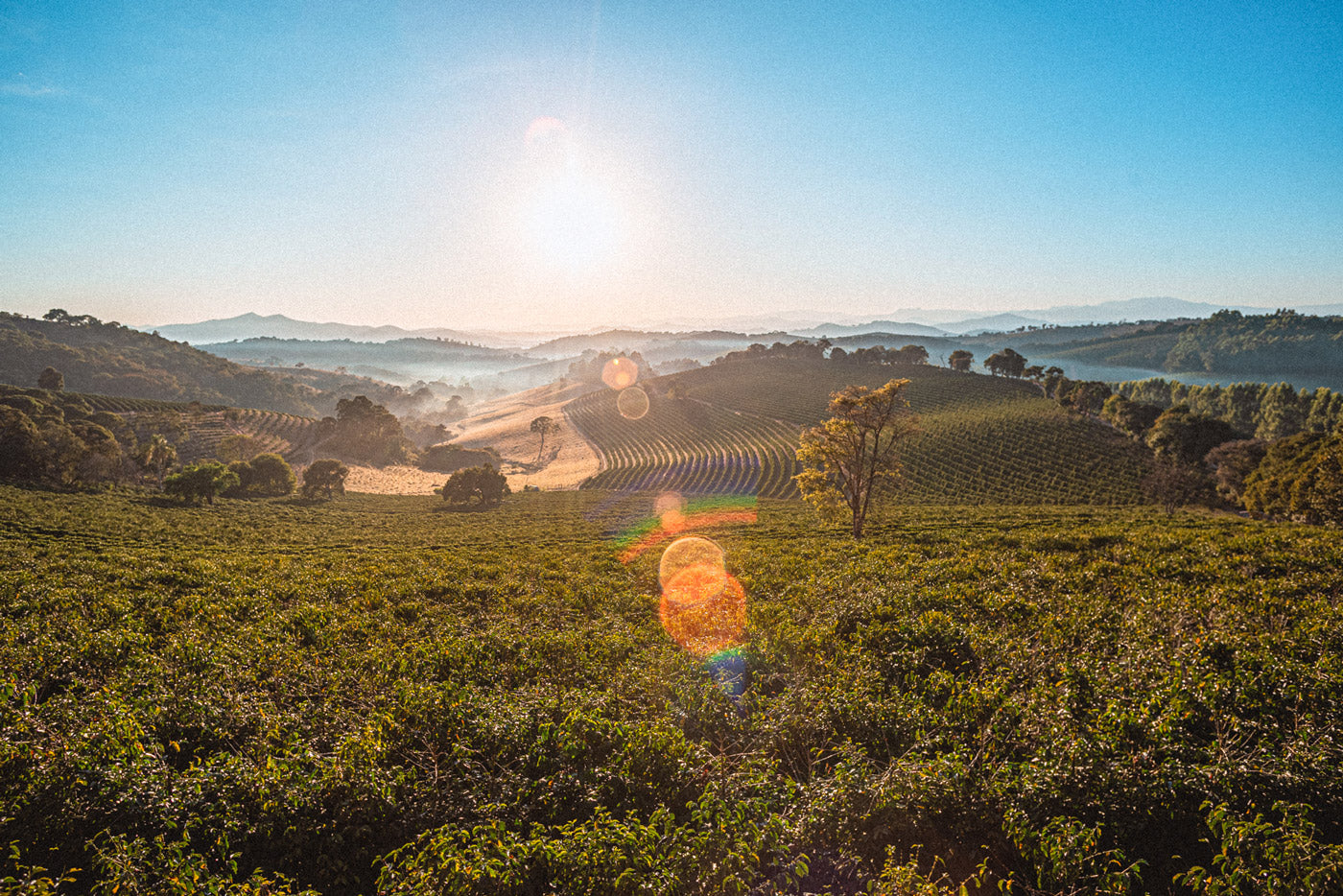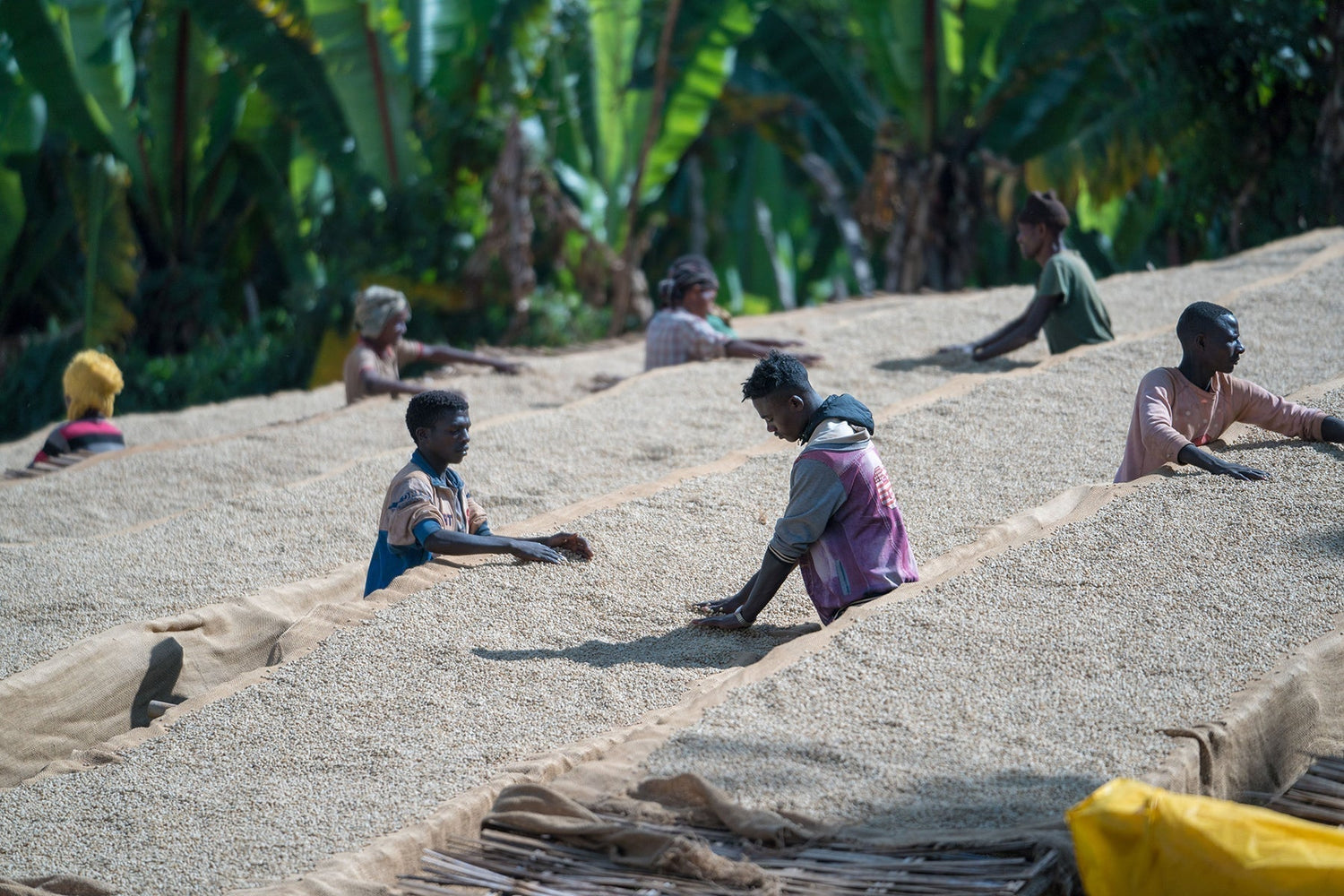Matcha coffee is a brand new, trendy coffee recipe that is made from finely ground green tea leaf powder, freshly brewed filter coffee and a small amount of milk or a plant-based alternative. Unlike conventional coffee or green tea, the matcha infusion is not prepared by brewing, but by beating the powder with hot water. This gives the drink a rich, creamy taste and a more intense green color. You can find out exactly what makes matcha coffee, what health benefits it offers you and how to prepare it in this blog article. Elias Fischbacher from the Wildkaffee Rösterei wishes you lots of fun trying it out.
Matcha coffee - healthy ingredients in Matcha
One of the most notable properties of matcha coffee is its high antioxidant content . Antioxidants are natural compounds that help protect cells in the body from damage caused by free radicals. Free radicals are unstable molecules that can be created in the body by various environmental and metabolic processes and can damage cells and tissues. Matcha coffee contains up to 137 times more antioxidants than regular green tea, making it a powerful nutritional supplement. In addition, matcha coffee also contains L-theanine, a unique amino acid that helps promote relaxation and may improve brain activity. L-theanine may enhance the effects of caffeine on the brain and reduce the effects of stress and anxiety. Some studies have shown that L-theanine also improves brain function and may promote memory and concentration.

Matcha coffee - a real powerhouse
Matcha coffee contains more caffeine than regular coffee . A teaspoon of matcha powder contains about 70 mg of caffeine, while a cup of filter coffee contains about 95 mg of caffeine. However, unlike regular coffee, the caffeine in matcha coffee is released more slowly , resulting in a more consistent energy boost and a longer lasting effect. In addition, matcha contains less acid than filter coffee , which should not be an additional burden for people with sensitive stomachs.
How can matcha coffee be prepared?
Matcha coffee can be prepared in a variety of ways , from a simple mix of matcha & filter coffee to more complex drinks like matcha lattes and matcha cappuccinos . Matcha coffee can also be used in smoothies and baked goods to give them an extra nutritional boost and a unique flavor. Admittedly, matcha coffee does taste quite different from regular coffee . Not to mention that it is a drink that has little in common with coffee or other milky coffee drinks. However, overall, matcha coffee is a healthy addition to other coffee drinks. With its many health benefits, unique flavor, and versatile uses, matcha coffee is a great addition to any diet.
Making matcha coffee is easy!
Preparing matcha coffee is very easy and uncomplicated. In the following recipe we show you how you can easily mix your matcha coffee with a hand filter coffee.
Ingredients:
- 1 teaspoon matcha powder
- Some milk or plant-based milk substitute
- 18g Brasil Capim Branco for hand filter preparation
- Some cocoa powder
- Sugar or an alternative sweetener (honey, agave syrup)
- Pinch of cinnamon
Here’s how to prepare it:
- Brew the filter coffee according to the recipe 300ml to 18g Brasil Capim Branco using a hand filter
- Put milk, cocoa powder, cinnamon & matcha powder in a jug
- Beat the mixture until it is homogeneous, the consistency should be slightly creamy
- Now add 180ml of filter coffee to your mixture
- Depending on your needs, you can refine your Matcha coffee with some honey, sugar or agave syrup
- Mix everything well again and serve in a glass
Ideally, your matcha coffee should have a light foam on top. If you want, you can garnish your finished matcha coffee with a little cinnamon or matcha powder.

What exactly is Matcha?
Matcha is a green tea made from the leaves of the Camellia sinensis tea plant . Growing matcha is a traditional Japanese practice with a long history. The tea leaves are specially grown to produce a dark, rich color and complex, delicate flavor. The leaves are hand-harvested and steamed to preserve their green color and nutrient content. The leaves are then separated from stems and branches and ground in stone mills to a fine, green powder. This powder is then used to make matcha tea and other matcha drinks. Matcha is known for its high levels of antioxidants and other nutrients such as vitamin C, vitamin A, iron, and calcium . Due to its health benefits and unique flavor, matcha has gained popularity in recent years and is now enjoyed by tea enthusiasts and health conscious people around the world.
Can you make matcha for matcha coffee yourself?
Matcha powder is usually made from specially grown tea leaves in Japan and then ground in stone mills to a fine powder. It requires a special technique and equipment to make matcha powder yourself, but it is actually possible if you have the right tools and suitable tea. Most often, so-called tencha leaves are used, but these are not so easy to get hold of. However, if you have a tencha plant at home, then you can actually make your own matcha.
And this is how you can make your own matcha at home:
- Cover the tea plant with shade about 20 days before harvest. This promotes the growth of chlorophyll in the leaves and gives them a deep green color and a better aroma
- Pick the leaves by hand. Only the young, tender leaves are used for Matcha
- Steam the leaves to preserve their color and nutrients.
- Dry the leaves at low temperature and remove the stems and veins.
- Grind the dried leaves in a mill to a fine powder.
Always keep in mind that this process can be very time-consuming and difficult. Unless you are a matcha expert, it will be difficult to produce high-quality matcha powder. It is best to buy your matcha from a tea retailer of your choice so that you can ensure that your matcha powder is of the highest quality possible.
Conclusion
The new trendy coffee recipe, matcha coffee, consists of finely ground green tea powder, freshly brewed filter coffee and a small amount of milk or a plant-based alternative. Unlike traditional coffee or green tea, matcha is prepared by whipping the powder with hot water rather than brewing it. This gives the drink a rich, creamy taste and a more intense green color. Matcha coffee is rich in antioxidants and contains L-theanine, an amino acid that can help with relaxation and improve brain activity. It also contains more caffeine than regular coffee, but it is released more slowly and therefore provides a longer energy boost. You can find step-by-step instructions for the perfect matcha coffee in the section above.


